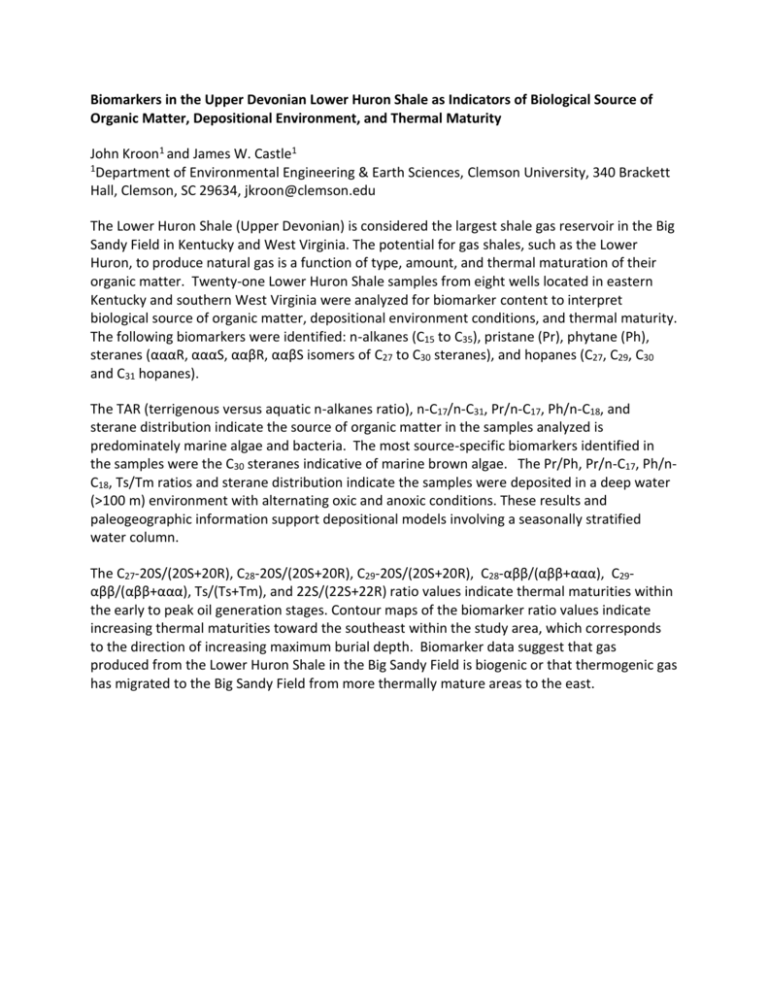The Lower Huron Shale (Upper Devonian) is considered the largest
advertisement

Biomarkers in the Upper Devonian Lower Huron Shale as Indicators of Biological Source of Organic Matter, Depositional Environment, and Thermal Maturity John Kroon1 and James W. Castle1 1Department of Environmental Engineering & Earth Sciences, Clemson University, 340 Brackett Hall, Clemson, SC 29634, jkroon@clemson.edu The Lower Huron Shale (Upper Devonian) is considered the largest shale gas reservoir in the Big Sandy Field in Kentucky and West Virginia. The potential for gas shales, such as the Lower Huron, to produce natural gas is a function of type, amount, and thermal maturation of their organic matter. Twenty-one Lower Huron Shale samples from eight wells located in eastern Kentucky and southern West Virginia were analyzed for biomarker content to interpret biological source of organic matter, depositional environment conditions, and thermal maturity. The following biomarkers were identified: n-alkanes (C15 to C35), pristane (Pr), phytane (Ph), steranes (αααR, αααS, ααβR, ααβS isomers of C27 to C30 steranes), and hopanes (C27, C29, C30 and C31 hopanes). The TAR (terrigenous versus aquatic n-alkanes ratio), n-C17/n-C31, Pr/n-C17, Ph/n-C18, and sterane distribution indicate the source of organic matter in the samples analyzed is predominately marine algae and bacteria. The most source-specific biomarkers identified in the samples were the C30 steranes indicative of marine brown algae. The Pr/Ph, Pr/n-C17, Ph/nC18, Ts/Tm ratios and sterane distribution indicate the samples were deposited in a deep water (>100 m) environment with alternating oxic and anoxic conditions. These results and paleogeographic information support depositional models involving a seasonally stratified water column. The C27-20S/(20S+20R), C28-20S/(20S+20R), C29-20S/(20S+20R), C28-αββ/(αββ+ααα), C29αββ/(αββ+ααα), Ts/(Ts+Tm), and 22S/(22S+22R) ratio values indicate thermal maturities within the early to peak oil generation stages. Contour maps of the biomarker ratio values indicate increasing thermal maturities toward the southeast within the study area, which corresponds to the direction of increasing maximum burial depth. Biomarker data suggest that gas produced from the Lower Huron Shale in the Big Sandy Field is biogenic or that thermogenic gas has migrated to the Big Sandy Field from more thermally mature areas to the east.











